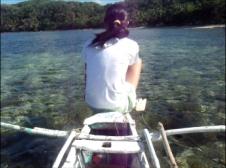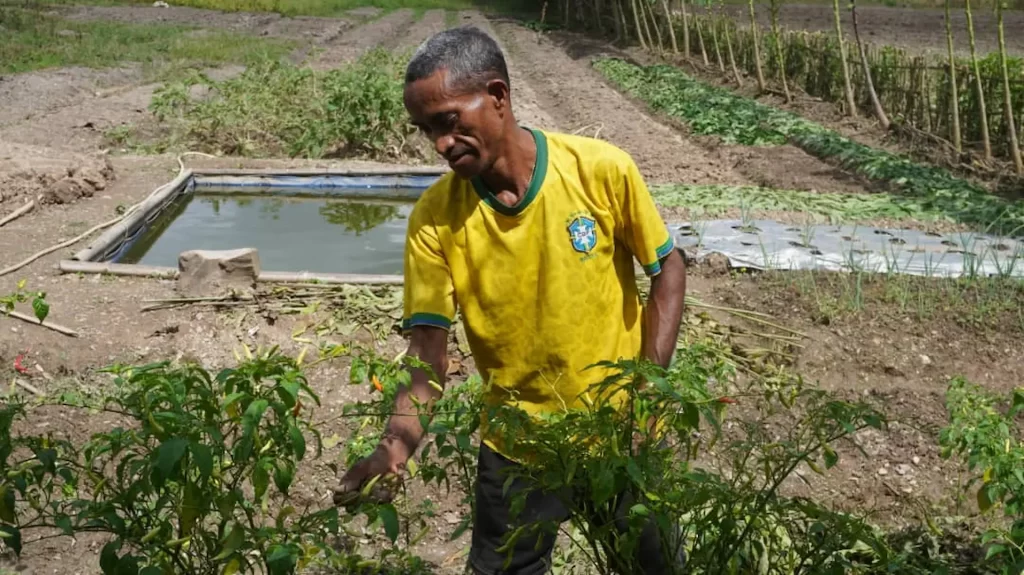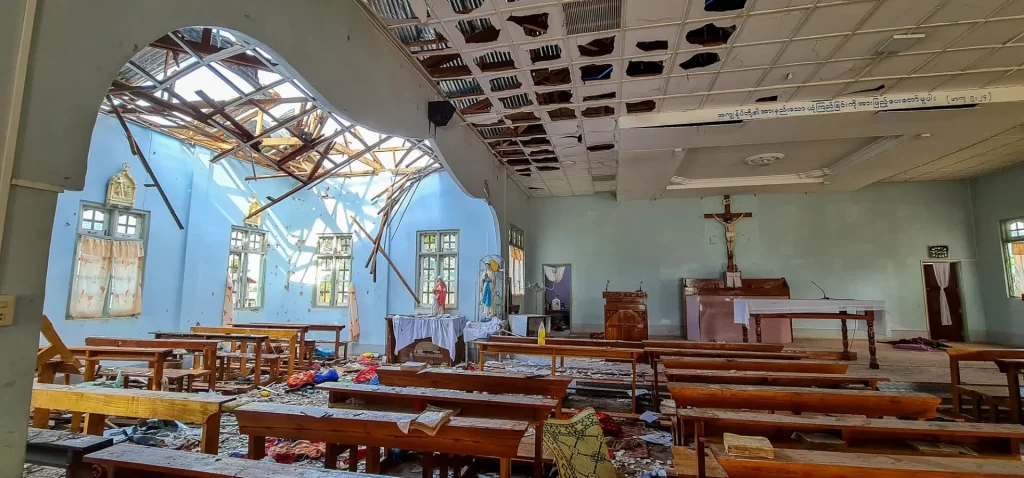Fr Tim Byron SJ did his tertianship in the Philippines in the Asia Pacific Tertianship 2011-2012. He shares with us a reflection on a Lent spent in Culion that he will long remember.
As a Jesuit from England, if you had told me that I would be able to work in a parish on a paradise island, I would have said you were mad. But there I was, in February going to celebrate mass, in the Jesuits’ own boat ‘San Ignacio,’ cutting through shimmering water, passing over coral reefs. Then, as the water changed from emerald green to deep blue, gliding past the many pearl farms that float in the inlets and passages.
My friends back home were texting me about arctic winds putting Britain in a deep freeze for the third successive winter, meanwhile I was pinching myself as schools of flying fish leapt out of the water in the distance and I strained my eyes looking for anything interesting that might be peering out from the mangroves. It sure beat trying to compose myself for mass sitting in a London traffic jam, on a grey dreary day, surrounded by road rage.
In the UK, if you are lucky enough to visit a tropical paradise, it is usually to celebrate your honeymoon – a once in a lifetime experience. When I took my vows 12 years ago, I had said farewell to that particular dream. But that is one of the many wonderful things about Jesuit life – you have the opportunity to visit places such as Culion – and not as a tourist. As a Jesuit you are welcomed into the heart of the community. As a priest you are trusted with and privileged to share in the day-to-day joys and sorrows of life – wherever we may be, the world is truly our Parish! You never feel like an outsider.
Culion is a fascinating place with an impressive Jesuit presence, an important mission and a unique history. Sir Isaac Newton once modestly said, ‘I could only see as I was standing on the shoulders of giants’. And certainly any Jesuit in Culion has an immediate sense of some of the giants that have gone before. Dedicated holy men and women, religious, lay, doctors, teachers and patients – who gave their life to what was once the “island of despair”. Of course, as is true anywhere, mingled with the saints there is a mixed legacy of folly as well as heroism, vanity as well as holiness. It seems as though through the isolation of Culion, these vices and virtues are magnified.
The former leper colony is now a buzzing town with a population of tens of thousands. Medical breakthroughs in leprosy in the 70s mean that the disease is now controlled, if not fully curable, so for many on the island it is only a memory.
However there is still one ward in the hospital with a few “abandoned” patients suffering from the disease. It was a memorable experience sharing mass with them on Valentine’s Day and reflecting on the unconditional love of God. If there were ever any hearts close to God’s own sacred heart, it was these!! After mass I couldn’t resist sharing a few videos of the UK and my family home. Those patients – whose horizon is limited to the hospital ward, perhaps still boxed in by fear – clearly appreciated being able to “escape” from Culion, as the videos clips of a snowy winter back in Britain were projected onto the walls.
There are two young Jesuits on the island – one who is parish priest and the other director of the Jesuit College – Loyola College of Culion.
Nowadays, when you walk around the island, you get a sense of prosperity. It is certainly true that the “stigma” of leprosy has also been profitable. Money has been generously donated by NGOs from Spain, Japan, Austria and Germany. There are many new motorbikes sitting proudly on the roadside, the shops are very well stocked, the island co-operative, which is administered by the Jesuits, always has people inside. This generosity has also created a certain culture of dependency that the Jesuits have to negotiate very carefully and not always successfully.
The overall experience of tertianship for me has been magnificent. One of renewal, of discovering one of the friendliest cultures and countries I have been to. Ignatius calls it ‘the school of the heart’ and I leave with a heavy heart – but one that is filled with many wonderful memories, faces, and places, whether it be videoke in Navotas, the Exercises in Novaliches, Christmas in Upper Kalinga, or Lent in Culion.
One final image: I will always remember arriving early for Ash Wednesday mass in a remote village on the island, and the catechists treating me to fresh coconut on a pristine beach. Lent will never be the same again. How does the saying go again? It’s more fun in the Philippines. Maybe “fun” is not the appropriate word – but as I leave, the most important feeling from my “schola affectus” is perhaps one I identify most with Ignatius himself, a deep lasting sense of gratitude and wonder.
Thank you!!
Tertianship is the final phase of Jesuit training and “schola affectus” means “school of the heart”. Fr Tim started a blog to share his tertianship experience – sjsa.wordpress.com.
Related story: Asia Pacific Tertianship 2011-12








